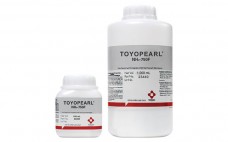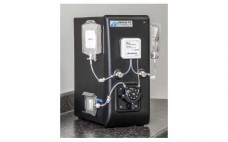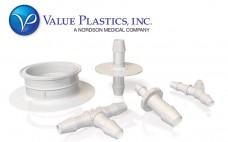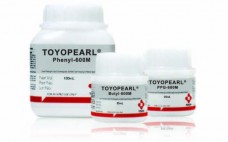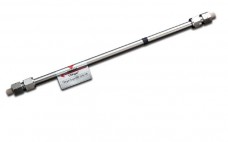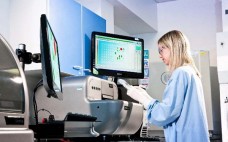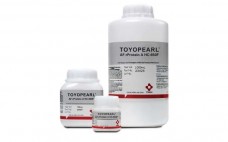NatriFlo™ HD-Q chromatography from Natrix Separations introduces reliable and reproducible Q polish performance that combines resin binding capacity with adsorber speed to achieve a new level of process flexibility. Gallus Biopharmaceuticals (a St. Louis based CMO) evaluated NatriFlo™ HD-Q membrane columns as an anion exchange polishing step with the objective of assessing NatriFlo’s ability to (1) reduce process-derived impurities to achieve target product profile; (2) maintain process robustness to process changes; and (3) achieve reliable scalability from lab to production.…
BPI White Papers
TOYOPEARL NH2-750F Aggregate Removal from Monoclonal Antibodies
The drive to reduce the manufacturing costs for biological therapeutics have increased the demands placed on downstream unit operations to the point where a single processing step is expected to accomplish a multitude of purification objectives. Where anion exchange resins have traditionally been used to remove DNA, endotoxin, and as a viral clearance step in the purification of monoclonal antibodies (mAbs), new ligand chemistries make it possible for anion exchange chromatography to do more. In the following paper, TOYOPEARL NH2-750F,…
Flow Electroporation for Vaccine Development and Production: From Subunit Vaccines to Ex Vivo Immunotherapy
MaxCyte flow electroporation is a universal, clinically validated transient transfection platform for rapid, high-quality cell transfection in the development and production of vaccines and cellular immunotherapies.
TOYOPEARL GigaCap® DEAE-650M Preserving Resolution at Increased Protein loads
TOYOPEARL GigaCap DEAE-650M is an ideal anion exchange resin for the chromatographic purification of biotherapeutic products. Since the TOYOPEARL GigaCap DEAE-650M has such a high dynamic binding capacity, the need for very large columns and massive buffer consumption is minimized, particularly for proteins expressed at higher levels due to upstream improvements.
The Importance of a One-Stop-Shop-6 Questions to Ask Your Fluid Management Component Supplier
A one-stop-shop fluid management component supplier assures quality, streamlines processes, and limits costs. To be certain you receive the preeminent and safest single-use component, take time to evaluate your fluid-management supplier or a supplier under consideration by asking the 6 important questions we pose in this whitepaper. Your supplier’s answers will help determine if the company is a steadfast partner and one-stop-shop committed to helping you pass FDA validation. You also will learn your supplier’s willingness to provide: the best…
A versatile high capacity, single-use chromatography tool with superior salt tolerance, process robustness and impurity removal
Strong anion exchange (Q) chromatography has become an industry standard in the polish purification steps of mAb production. It is a proven technology to remove DNA, viruses, endotoxins and acidic host cell proteins from process feed streams in flowthrough mode. As the industry pursues an increasing interest in downstream single-use technologies and flexible biomanufacturing due to advancements in cell culture technology and the emergence of cost-sensitive biosimilars, conventional purification technologies present limitations. Despite their high binding capacity, traditional resin-based chromatography…
Hydrophobic Interaction Chromatography: Effects of Mixed Electrolytes on Protein Separations
For HIC separations, parameters other than resin surface modifications can be employed to enhance performance. This application note addresses the electrolyte composition of the mobile phase as one parameter responsible for protein adsorption and desorption. The results presented illustrate the benefits regarding capacity and selectivity in HIC of often neglected salts and their mixtures.
Separation of Monoclonal Antibody (mAb) Monomer from its Half-body using Size Exclusion Chromatography
Recent research has shown an interest in mAb half-bodies as therapeutic vectors as they can be further targeted for conjugation, enzyme labeling, or antibody immobilization. The TSKgel SuperSW mAb HR is able to achieve high resolution between the mAb monomer, the mAb half-body, and fragments due to its unique pore-controlled technology optimized for mAb analysis, as well as its smaller 4 ÎĽm particle size.
Applying Disruptive Technologies in Mammalian Cell Line Development
Recombinant monoclonal antibodies (MAbs) maintain their ranking as the best-selling class of biologic drugs. The introduction of high titer bioprocessing for the majority of these MAb products has focused efforts towards maintaining desired quality attributes and reducing time to market. Furthermore, patents covering several blockbuster MAbs and the expression technologies, which facilitate their high-level expression, are due to expire over the next decade. A wave of second generation or “follow-on” biopharmaceuticals/bioprocesses will therefore be vying for market share and regulatory approval. Consequently, should biopharmaceutical manufacturing companies rely on traditional “platform” methods of cell line development (CLD), which are well known but yield extensive variation and unpredictable stability of expression, or invest in emerging technologies, which offer the potential of greater reproducibility and speed? Enabling technologies in this area include host cell engineering, engineered expression vectors, and rapid transient gene expression. Given the well-known mantra “the product is the process”, implementation of these disruptive technologies will require a thorough understanding of how changes at the CLD-phase affect key production process characteristics such as high cell-specific productivity, correct product processing and rapid cell proliferation. Traditionally, CLD optimisation is carried out using a lengthy trial-and-error approach where cells are treated as a “black box” and characteristics are iteratively improved. Further advancement in CLD is therefore likely to benefit from the tools of systems biology. These tools will ensure that future CLD manipulations will be informed by an understanding of the genetic, regulatory, and metabolic networks that determine key process characteristics during a production process.
Monoclonal Antibody Purification with a High Capacity Protein A Resin
“Protein A resins constitute a substantial cost in state-of-the-art mAb purification processes. Factors such as operating cycles, capacity, and mAb titer can have an impact on total costs associated with mAb purification. The purification of a monoclonal antibody from crude feed stock using TOYOPEARL® AF-rProtein A HC-650F, a high capacity protein A resin from Tosoh Bioscience, show that this particular high capacity protein A resin delivers highly pure antibodies at yields approaching 90%.”


